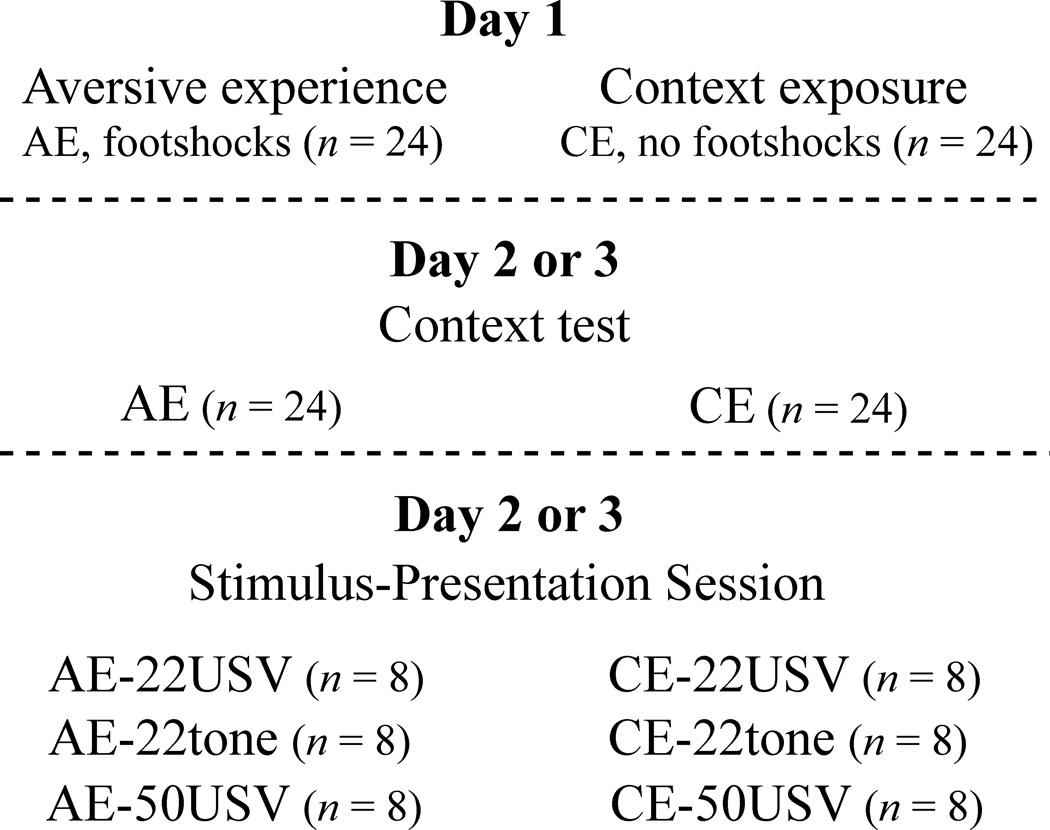Figure 1. Experimental design.
On day 1, subjects either underwent an “aversive experience” (5 unsignaled footshocks) or “context exposure” (no footshocks). On days 2 and 3, subjects were tested for context conditioning and reactivity to ultrasonic stimuli in counterbalanced order. The context test consisted of re-exposing subjects to the conditioning chamber. During the stimulus-presentation session, subjects were presented one of three stimuli in a novel chamber. The stimuli were a 22-kHz USV, a 22-kHz tone, or a 50-kHz USV. Freezing and vocalizations were measured throughout all stages.

